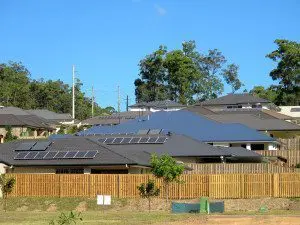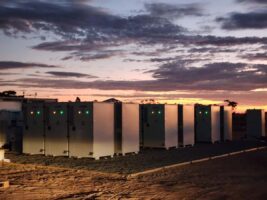Editor’s note: In recent weeks, the issue of rooftop solar exports has raised its head. Last week, a webinar hosted by PV advocacy group Solar Citizens presented a view, which was reported in RenewEconomy, that charging solar households to export their excess generation to the grid was unfair and unnecessary. SA Power Networks has asked to respond to some of the issues raised. Here is the unedited response.
We note the article RenewEconomy published on August 14, Charging for rooftop solar exports ‘not needed and not fair, contained a number of inaccurate or misleading assertions and claims.
In particular, we note that:
• Networks do not lose money by people taking up solar. The current regulatory regime and its ‘revenue cap’ approach means that our overall allowable revenue is not impacted by lower energy sales due to customer solar PV take-up.
• Distribution networks, and certainly SA Power Networks, are actively pursuing strategies to facilitate greater take-up of solar. We are fortunate that solar PV increases the usefulness of our network, since it now hosts a large-scale, decarbonised energy source, that can be utilised by all customers. This is a good outcome for network businesses as well as customers.
• The continued take-up of solar PV will drive network investment. We now have utilised much of the inherent capacity of our networks to support PV exports. This is why we see voltage issues arise at certain times and are beginning to see thermal overloads as peak exports exceed previously observed peak demands.
After significant support from both solar and non-solar customers in SA, the Australian Energy Regulatory has approved funding of more than $30
million over 2020-25 for SA Power Networks to begin to address these issues in smart and efficient ways.
Our state government has also underwritten an additional $10 million program to allow us to accelerate improved performance of solar PV in the state; and we have secured commonwealth grant funding from ARENA for industry-leading trials aimed at improving network PV-hosting capacity.
• Given that network investment is required to support additional solar PV, a reasonable question is “Who should pay for this investment?” Solar customers? Non-solar customers? All customers?
In respect of this, we think that the current network regulatory principle of cost reflectivity is a good place to start. That is, we consider that services should be priced at a rate reflective of the long-term efficient cost of providing that service.
Under such a principle, solar customers would receive a charge commensurate with the investment required to supply that service. We would welcome any constructive suggestions as to how these investment costs should be allocated if cost reflectivity is not considered appropriate in this case.
• Some parties have suggested that solar customers should not pay network export tariffs since they are providing a net benefit to the market. We agree that rooftop solar PV is providing a net benefit to the market.
However, solar customers receive that benefit through their retailer feed-in tariff. We are talking here specifically about network tariffs. It would not be cost-reflective for us to incorporate market benefits into our network costs – and of course, we would have no way of ‘collecting’ these benefits, since they accrue to retailers.
• However, we re-state, if interested parties can recommend alternative, efficient ways to fund investment to enable further customer access for solar PV, and efficiently recover the cost of this investment, we would welcome them providing their ideas to the AEMC as part of the rule change review process.
Mark Vincent is the general manager of strategy and transformation at SA Power Networks










